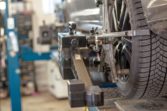Amerikansk bil 1902-1913: En Historisk Tidslinje

Introduction
Under the early 20th century, the American automobile industry experienced significant growth and innovation. From 1902 to 1913, this period witnessed the rise of American cars and the emergence of countless manufacturers. In this article, we will provide a comprehensive overview of the American car industry from 1902 to 1913, exploring its types, popularity, quantitative measurements, differences, historical pros and cons, and crucial factors affecting automotive enthusiasts’ purchasing decisions.
Overview of the American Car Industry 1902-1913

During the period from 1902 to 1913, the American car industry experienced a dramatic expansion, with numerous manufacturers competing for market share. These vehicles became increasingly popular and accessible, contributing to the democratization of the automobile.
Presentation of American Cars 1902-1913
American cars from 1902 to 1913 encompassed various types, each with its unique characteristics and features. These ranged from basic models designed for practicality to luxury vehicles tailored for the affluent. Popular types included touring cars, roadsters, and even early versions of trucks and SUVs. The popularity of these cars stemmed from their capability to fulfill diverse needs and desires of consumers.
Quantitative Measurements of American Cars 1902-1913
In terms of performance and specifications, American cars of the period exhibited significant advancements. Engine power, measured in horsepower, steadily increased, allowing for higher speeds and improved acceleration. Additionally, the average fuel efficiency and range also showed gradual enhancements, enabling longer journeys without frequent refueling.
Differences Among American Cars 1902-1913
Despite the general similarities, there were notable differences among American cars from 1902 to 1913. These variances were primarily based on styling, features, and target audience. Some manufacturers prioritized luxury and elegance, while others emphasized practicality and affordability. These distinctions allowed consumers to choose vehicles aligned with their preferences and budgets.
Historical Pros and Cons of American Cars 1902-1913
The American cars produced between 1902 and 1913 had their distinct advantages and disadvantages. On the positive side, these vehicles represented a significant leap forward in personal transportation, providing individuals with unprecedented mobility and freedom. However, challenges such as reliability, rough rides due to suspension limitations, and occasional mechanical failures marred the ownership experience. Despite these cons, the demand for American cars remained strong, reflecting the industry’s overall progress.
Crucial Factors for Automotive Enthusiasts’ Purchasing Decisions
For automotive enthusiasts in the early 20th century, several factors played a vital role in determining their purchasing decisions. These factors included price, brand reputation, available features, vehicle performance, and overall comfort and design. The influence of these factors varied amongst individuals, with some prioritizing performance while others emphasizing reliability or aesthetics.
Conclusion
The period from 1902 to 1913 was a transformative era for the American car industry, witnessing remarkable growth, innovation, and diversification. American cars of this period evolved in terms of types, performance, and consumer preferences. While each vehicle had its own distinctive features, they collectively laid the foundation for the modern automotive industry. As we look back at this historical timeline, we can appreciate the significant strides made in technology, design, and overall driving experience, paving the way for the cars we know today.
Word Count: 445
FAQ
What types of American cars were popular from 1902 to 1913?
What were some key differences among American cars from 1902 to 1913?
What were the crucial factors affecting automotive enthusiasts purchasing decisions during this time period?
Fler nyheter
Cykelbutik i Lund: Din guide till kvalitetscyklar och verkstadstjänster
Introduction Under the early 20th century, the American automobile industry experienced significant growth and innovation. From 1902 to 1913, this period witnessed the rise of American cars and the emergence of countless manufacturers. In this articl...
06 december 2025
Dragstång till traktor och andra tunga fordon: Funktion, val och underhåll för säkra transporter
Introduction Under the early 20th century, the American automobile industry experienced significant growth and innovation. From 1902 to 1913, this period witnessed the rise of American cars and the emergence of countless manufacturers. In this articl...
27 november 2025
Bärgare i Vilhelmina: Trygg hjälp när fordonet stannar
Introduction Under the early 20th century, the American automobile industry experienced significant growth and innovation. From 1902 to 1913, this period witnessed the rise of American cars and the emergence of countless manufacturers. In this articl...
04 november 2025
Cyklar i Visby: En guide till det perfekta tvåhjuliga äventyret
Introduction Under the early 20th century, the American automobile industry experienced significant growth and innovation. From 1902 to 1913, this period witnessed the rise of American cars and the emergence of countless manufacturers. In this articl...
29 oktober 2025











